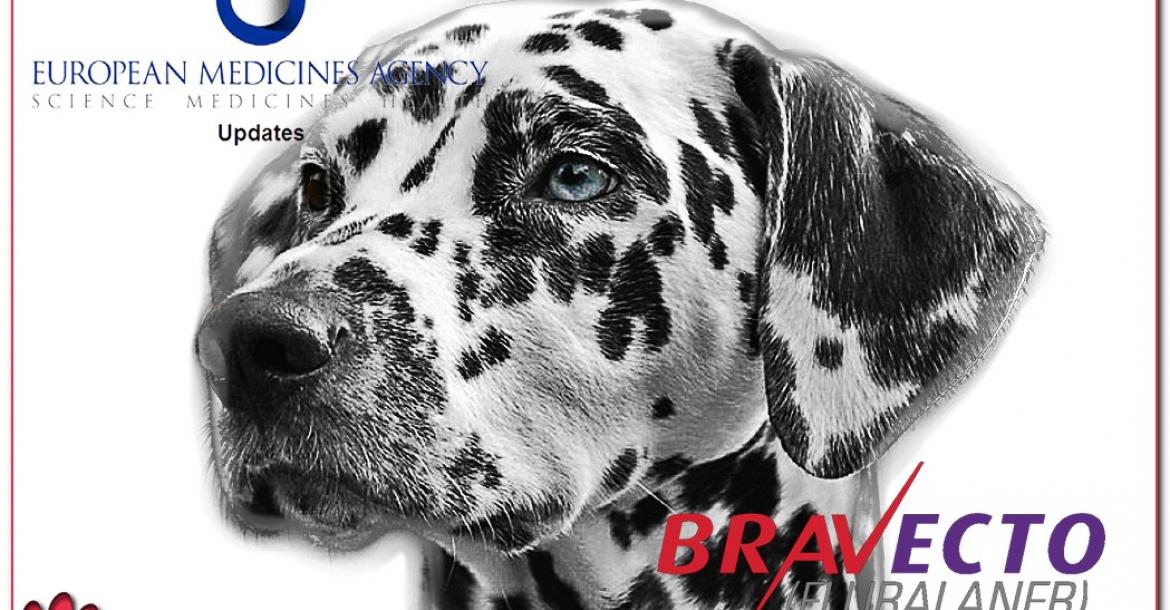European Medicines Agency asks Merck to do further investigations to adverse reactions on Bravecto
The European Medicines Agency (EMA) has asked Merck to do further investigation to adverse reactions of the chewable flea treatment product Bravecto. EMA insists on a so called “Targeted PSUR” investigation to test the safety of the product.
PSUR stands for Periodic Safety Update Report, an investigation to adverse reactions that were reported after the product was launched (post-authorisation). Manufacturers have to do regular PSUR’s anyway, but EMA noted that after the safety report from March-August 2016, there was not enough information available to judge about the reported adverse reactions and the safety of Bravecto. This is what the CMPV (Committee for Medicinal Products for Veterinary Use) has decided after their meeting on the 17th of January 2017. Merck will have to analyse all significant adverse reactions that were reported since Bravecto has been launched. This may lead to the SPC (Summaries of Product Characteristics) being adjusted or the EMA deciding about the allowance of Bravecto as a safe product.
Lethargy
The last safety report concluded that the SPC of the product should be edited. Article 4.6 now says “Commonly observed adverse reactions in clinical trials (1.6% of treated dogs) were mild and transient gastrointestinal effects such as diarrhoea, vomiting, inappetence and drooling” The following information will be added to this: “Lethargy has been reported very rarely in spontaneous (pharmacovigilance) reports.” This addition is based on reports of dogs showing lethargy which have been investigated by EMA back in 2015. Merck will have to submit the new documents to EMA where the additional information is provided and will be accessable for all of Europe. EMA says: "To implement the recommendation for the change of the SPC, the company is required to submit to EMA a variation to the conditions of the marketing authorisation. Once finalised, the regulatory recommendation will require the adoption by the European Commission as a legal act applicable throughout the European Union."
Serious adverse reactions
Dogzine asked EMA if there is a reason to presume that Bravecto isn’t as safe as was thought in the beginning. According to EMA it’s too early to conclude anything based on the PSUR from last year about the reported adverse reactions and their association with usage of Bravecto. “. The targeted PSUR should include an extensive analysis and overall safety evaluation of all serious adverse events reported since launch of the product with the aim of establishing whether there is a potential association between the use of the product and the adverse events (AE) under consideration. For this specific investigation the company should consider any potential underlying cause for the adverse events; discuss any potential contributing factors i.e. breed, age, etc.; and discuss the assumed prevalence of the AEs, giving consideration on whether the findings change the benefit-risk balance of the product.” The European database for adverse reactions (Eudra Vigilance Veterinary) has recorded 3690 reports of adverse reactions since the launche of Bravecto until now (February 2014 – January 2017). According to Merck around 34,5 million dogs have been treated with Bravecto worldwide since it was launched in 2014 untill August 2016. In the reported cases it’s unknown wether Bravecto can be held responsible for the illness of the dogs, or if other medication or an underlying disease could’ve influenced the dog’s health as well. Merck has been asked to investigate this for all reported cases.
Incomplete
EMA also notes that reports of adverse reactions are often incomplete, what makes it more difficult to conclude wether Bravecto is (fully) responsible for the health problems that occurred in the patient. Organisations like the EMA have no choice but using these often incomplete reports and use statistical analysis to consider wether further investigation is necessary, like it’s the case now for Bravecto.
In The Netherlands, TV program TROS-Radar had the worries about Bravecto as one of their subjects on Monday evening on the 13th of February 2017.





